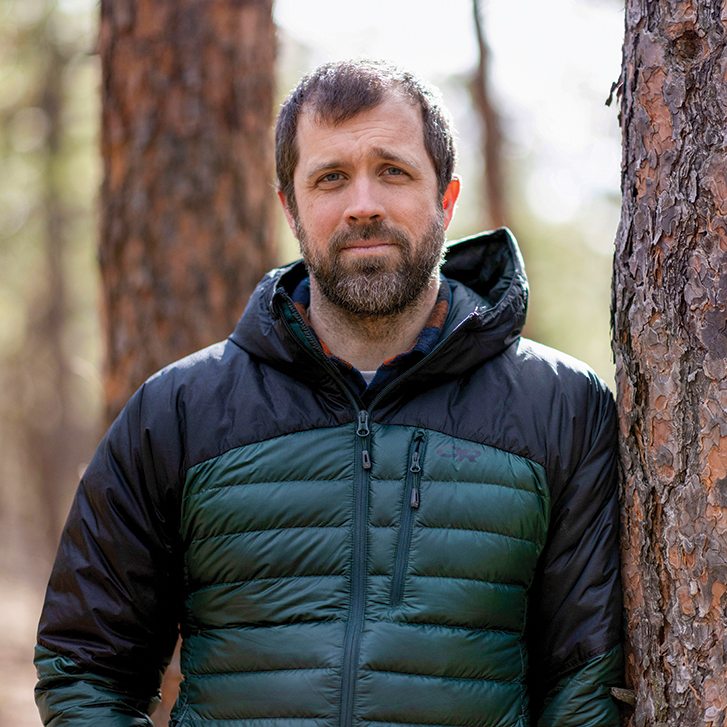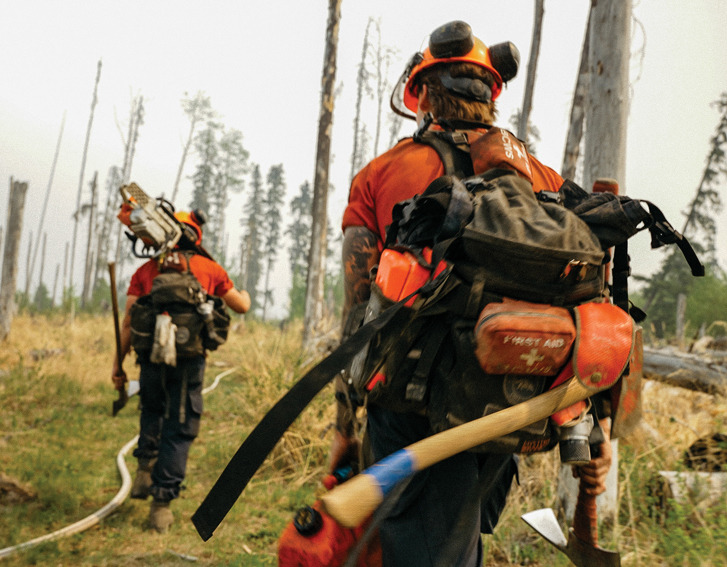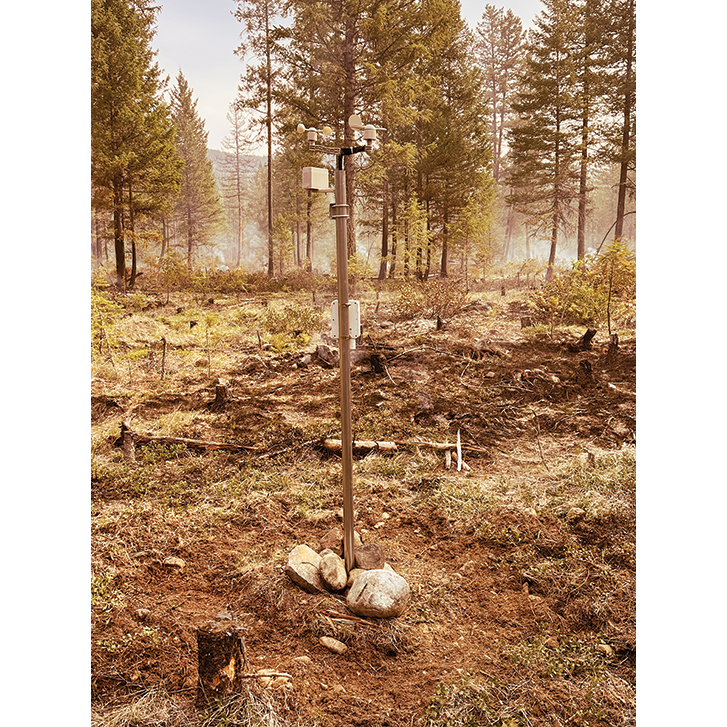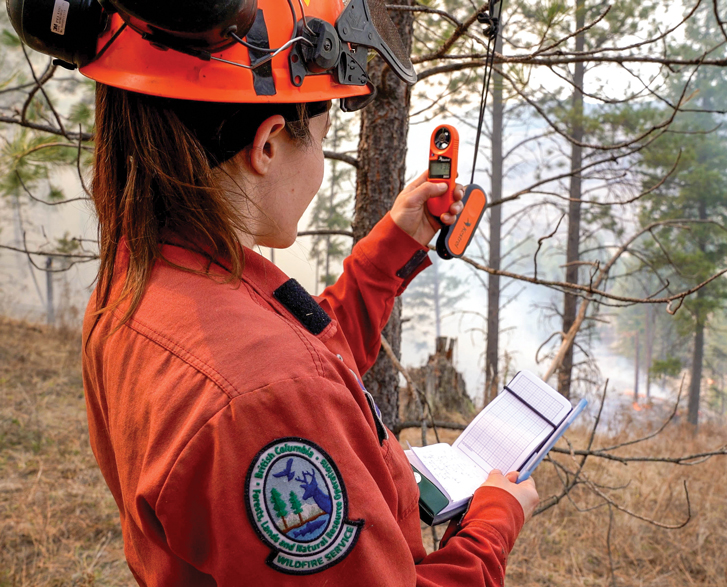For years, Mathieu Bourbonnais was the person repelling out of helicopters to fight forest fires, not the one preparing to evacuate from them.
But well before last year’s fast-moving McDougall Creek wildfire jumped Okanagan Lake in Kelowna, the former wildland firefighter knew it could get bad—not because of anything he heard or saw, but because of a piece of tech he had helped to create.
“I was checking all my sensors, and the McDougall Creek fire burned about 15 of them,” says Bourbonnais, now a researcher and assistant professor of earth, environmental and geographic sciences at UBC Okanagan. “Seeing that, it was pretty obvious that once the fire got going, it was going to jump the lake, no problem.”

Those sensors, which Bourbonnais and his UBCO team are developing in partnership with Rogers, could be a game-changer in British Columbia. Acting as an early warning system, they are essentially small, low-cost weather stations that can be deployed across remote locations where they can monitor conditions—things like air temperature, precipitation, relative humidity, wind speed, wind direction, soil moisture and soil temperature. Using cellular or satellite networks, the real-time data can then be transmitted to anyone from local fire services to forestry companies, and from utilities to First Nations.
That data, in turn, can help agencies determine which areas are most at risk of fire, model what might happen, brief crews on the ground and better triage and closely track fires once they start—especially in more remote communities.
“Right now, we rely on a really sparse network of very expensive weather stations across 63 million hectares of forest in B.C., whereas we’ve deployed almost 100 of these sensors in the Okanagan alone,” says Bourbonnais. “So we have a much better sense of where the pressure points are on the landscape.”
Those pressure points are rapidly proliferating. The 2023 wildfire season was the most destructive in B.C.’s history, burning more than 2.84 million hectares—double the previous record of 1.35 million hectares set in 2018, and 10 times the 20-year average. The fires forced tens of thousands of residents to evacuate affected areas; hundreds lost homes and businesses. Six firefighters lost their lives. The estimated cost of wildfire suppression was a whopping $817 million.
With longer fire seasons and drought conditions persisting through winter, the push toward prevention and preparedness is quickly growing, says BC Wildfire Service research and innovation officer Justin Nicholas. And while tech will never replace old-fashioned pumps, hoses, shovels and water bombers, it is increasingly being used to give agencies like the Wildfire Service the upper hand in the fight against fires.

This season alone, new software will help predict fire growth and behaviour, improved satellite devices will offer better communications and a trial with night vision imaging will help spot fires after dark. The Wildfire Service is also working with Bourbonnais to test the UBCO sensors in prescribed burn areas to determine how they might employ them in future.
“Fires are still suppressed by our staff on the ground. That is the core of our organization. But if we are able to more accurately understand conditions on the ground, and the potential of an incident to grow or behave in certain ways, then we can be more specific with our allocation of resources,” explains Nicholas, who says that conditions can vary wildly even over relatively short distances, so having finer ground-level data could make an enormous difference. Meanwhile, improvements to cell and satellite connectivity are helping to fuel the shift.

Technology is not a replacement for traditional pumps and hoses, but it is helping firefighters combat forest fires
Photo by BC Wildfire Services
“It doesn’t matter if we have weather sensors out in the middle of the forest if they can’t connect,” says Nicholas. “To fully leverage these new tools and technologies that are arriving to the market, that connectivity is required—and it continues to be further developed, especially in the northern half of the province where it’s not as widespread.”
Back at UBCO, Bourbonnais is working on the AI side of his sensor project, which will take data from various on-the-ground sensors and combine it with information about everything from lightning patterns to fire history, then predict conditions in the areas between sensor locations. That could not only help communities (especially those in rural and remote locations) detect and fight fires when they happen, it could also tell them where they need to apply mitigation measures like thinning and prescribed burning.
So far, the project has piqued the interest of fire services, industry, First Nations, insurance companies and others in B.C., and Bourbonnais hopes to introduce it nationally within the next few years.
“The thing with fire is the risk is never zero. There’s always going to be risk. But it’s about changing the conditions of how that fire might arrive on your doorstep,” he says. “So if we can help with some of that planning and strategy, it allows us to build landscapes and communities that are more resistant for when the fire does come—and maybe it won’t have the same impact.”










